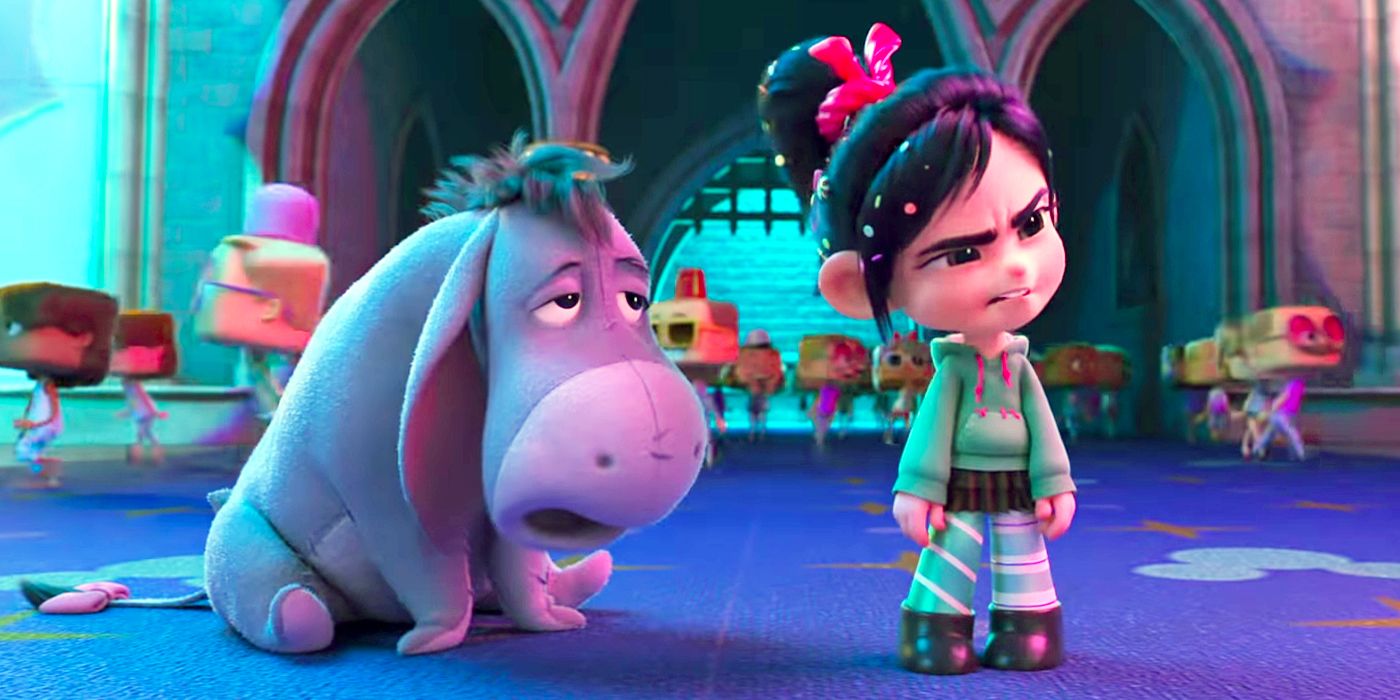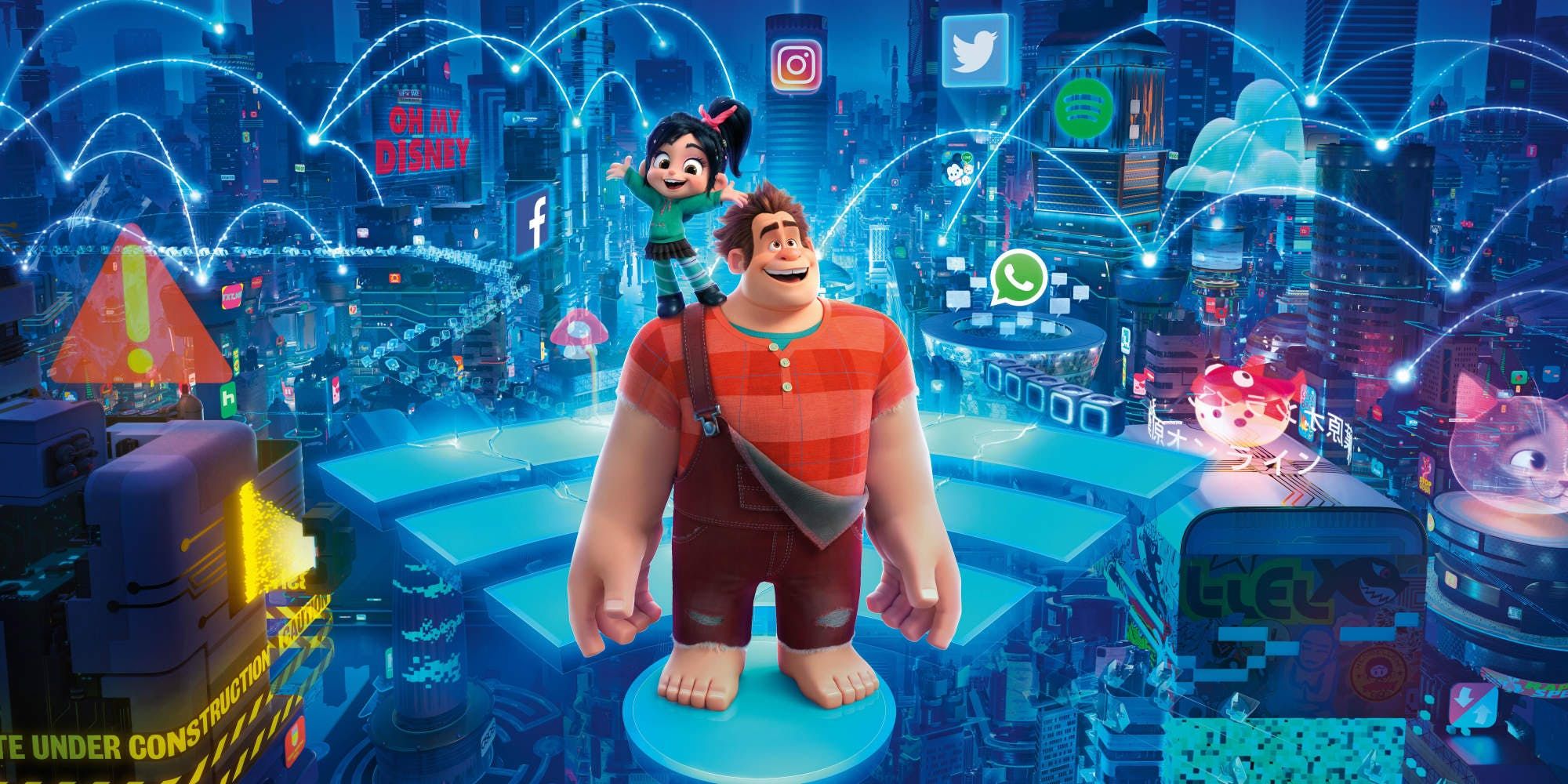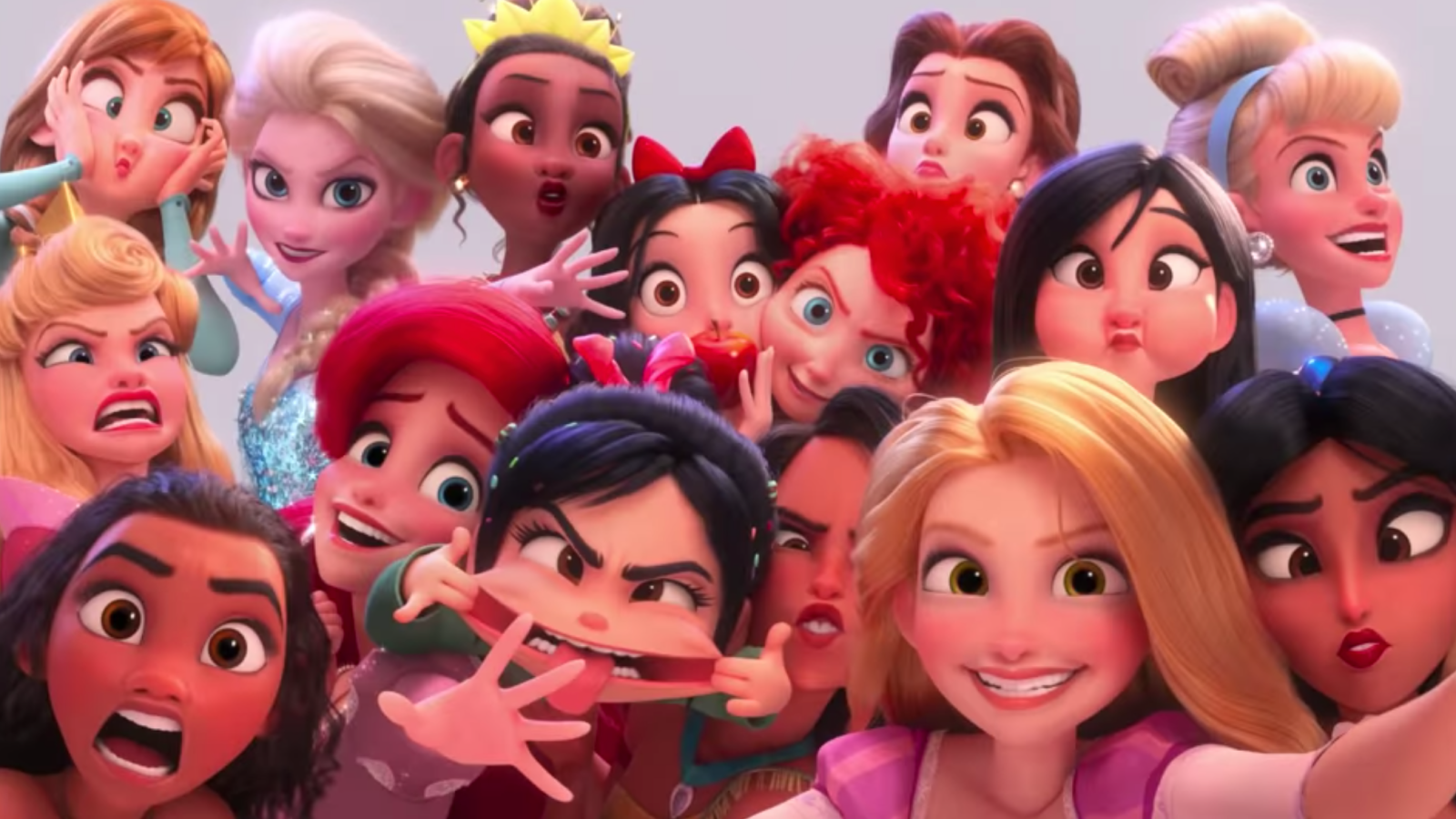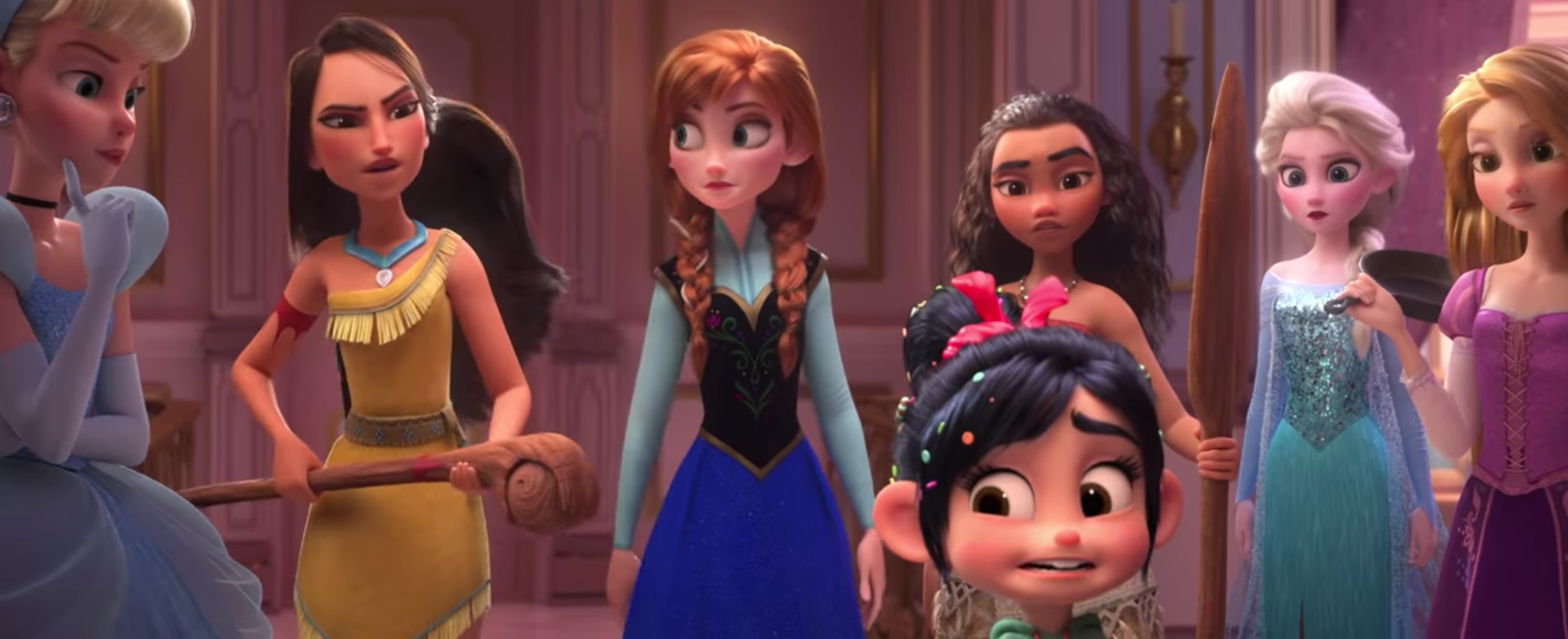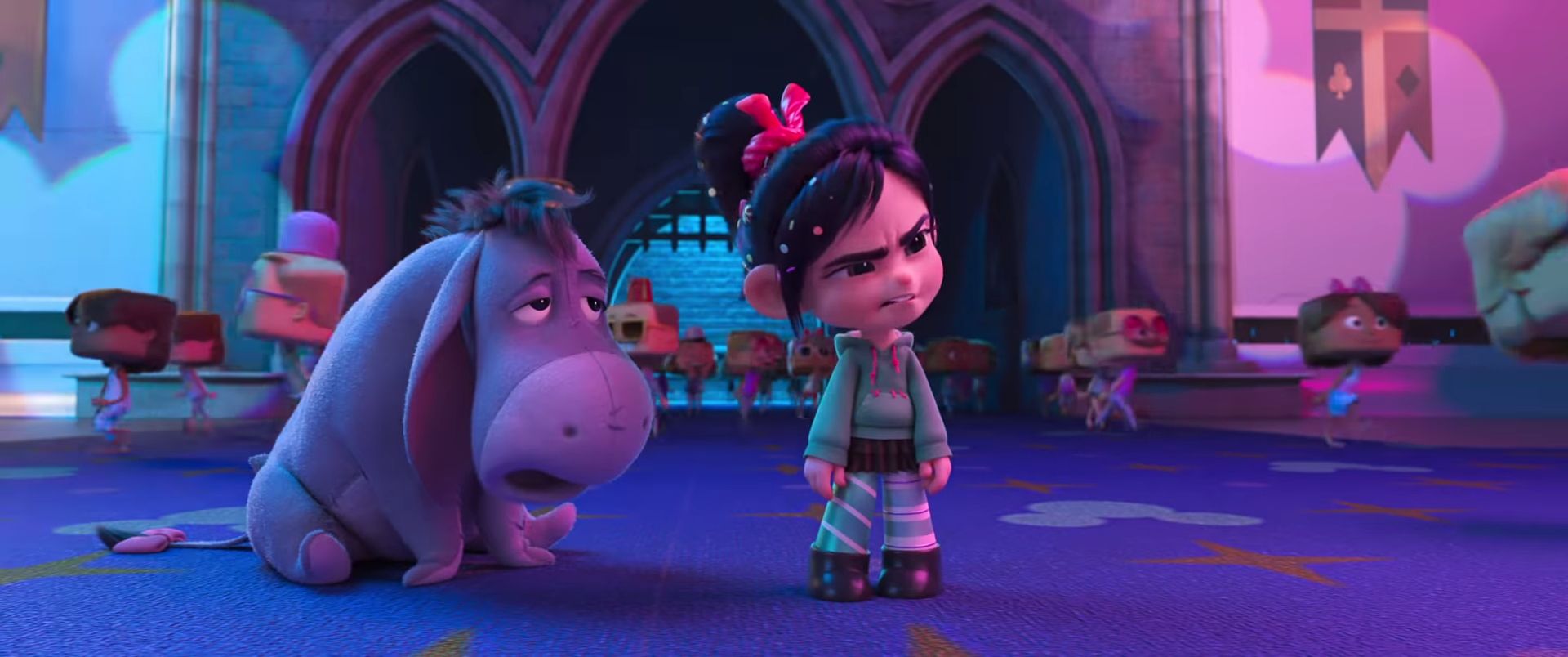WARNING: The following article contains spoilers for Ralph Breaks the Internet, in theaters now.
Ralph Breaks the Internet isn’t quite as good as the film that preceded it, but it's a solid entry in the Disney animated canon. Still, while the actual story of the film is bittersweet and meaningful, the plot gets lost in the second act of the film and shifts into more of a parody of a Disney movie than an actual release from the House of Mouse.
RELATED: New Ralph Breaks the Internet Footage Debuts Gadot's Shank, Slaughter Race
The crux of the movie’s plot follows Ralph and Vanellope as they try to raise enough money across the internet to afford a replacement steering wheel for Sugar Rush. The film tries to balance the jokey nature of the original film with a more somber and self-reflective tone, but that takes a backseat as Ralph and Vanellope turn Ralph into a meme to garner more clicks/cash.
Vanellope is eventually sent to Oh My Disney, which encompasses all the properties owned by the Disney company. And it’s here that the plot comes to a grinding halt. The film already didn’t have much urgency (despite the ticking clock of Sugar Rush being sold for parts if they don’t get the wheel in time), but even that tension is muted so the film can turn into a series of sketches poking fun at Disney.
RELATED: Disney Princesses Meet Vanellope in Ralph Breaks the Internet Clip
Many of the jokes themselves are admittedly funny. Groot giving an AMA is fantastic in its simplicity, and the in-character appearances of Disney classics like Grumpy and Eeyore are solid moments of fan service. The jokes even take a harsher (and funnier) edge when they shift to the Disney Princesses.
When the Princesses are introduced, it’s reminiscent of the actresses who portray the characters at the Disney parks. They are exhausted, all smiles and waves around the legion of fans but desperate to relax. They play the part of the friendly princess around the kids, and then head back to the cast room to vent.
RELATED: Ralph Breaks the Internet: Early Reviews Declare Animated Sequel Better Than the First
When Vanellope introduces them to sweatpants, they finally kick back in comfort. There are gags through the sequence at Disney’s expense, including the prevalence of animal sidekicks and kidnappings as part of the narratives.
The scene also leans on the inherent character traits to tease the original films. Pocahontas always has her hair flowing in the wind, for example, even when she’s indoors. The other princesses can’t understand whatever Merida is trying to say, and point out that she’s “from the other studio.”
It’s a wonderfully humanizing moment for the characters, but it also undercuts all the tension and drive of the film. Vanellope literally stops her mission to just hang out with the Princesses for a bit. The movie gets lost in its own parody of itself. And while it may be a funny parody, it still forces a tonal shift in the film that robs the story of its urgency and its characters of agency.
Yes, the princesses showing up at the end is funny and cool, but it also defangs the otherwise solemn character growth and overall arc of the film, making the character’s inner search for acceptance end with punchlines and references. Sleeping Beauty having a spinning wheel is a fun reference, but adds literally nothing to the plot.
RELATED: Ralph Breaks the Internet is a Solid Sequel with an Amazing Message
One of the best individual moments of the film comes as Vanellope is trying to figure out what she really wants. Trying to take the advice of the Disney Princesses, she sings to express her emotions. This begins a spectacular musical number; an “I Want” song that’s up there with “Part of Your World."
It’s even written by Howard Ashman, half of the team that helped craft the music for many Disney Classics like Beauty and the Beast and Aladdin; a gleefully over-the-top Disney musical number, but set in a Mad Max/GTA inspired world. It’s the best joke on the Disney formula in years, leaning into all the Disney animated film traits but with a grit and grime associated with a world where exploding car races are the norm.
On its own, it’s a fantastic send up of Disney clichés. Within the story, it even helps fuel Vanellope’s decision to stay in Slaughter Race instead of going home with Ralph. But the scene is played throughout as a gag, a goof, a parody of the kind of Disney musical numbers that have in-part defined an entire generation of audiences. It undercuts the principal bittersweet tone of the story for three minutes so Disney can laugh at itself.
It’s good that Ralph Breaks the Internet shows a more sardonic and relaxed side of Disney. It’s just a shame that doing so weakened the actual movie.
Directed by Rich Moore and Phil Johnson, Ralph Breaks the Internet arrives in theaters on November 21. The film features the voices of John C. Reilly, Sarah Silverman, Taraji P. Henson, Gal Gadot, Jane Lynch, Ed O’Neill and almost every Disney Princess voice recorded.

